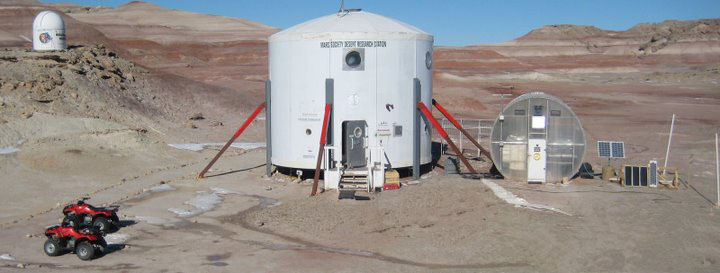Dictionary of Space Concepts
The Dictionary of Space Concepts (DSC) provides not only the basis for the advanced English language classes of the Multilingualism Programme; it also serves as larger online support platform for all UNIVERSEH students, with the aim of training specific space terminologies across various fields connected to the space sector. The DSC combines core space concepts and with helpful illustrations, all in an open-project format, which is freely available to everyone inside and outside UNIVERSEH. We welcome your contributions, comments, and expertise!
Do you want to take part of developing the Dictionary of Space Concepts? Enrol in the Collaborative Dictionary of Space Concepts.
Special | A | B | C | D | E | F | G | H | I | J | K | L | M | N | O | P | Q | R | S | T | U | V | W | X | Y | Z | ALL
A |
|---|
Absolute Magnitude | |||
|---|---|---|---|
Image/Video/Audio: Image/Video/Audio Source: Short Definition: Absolute magnitude is the measurement of the brightness of celestial bodies using inverse logarithmic calculations in astronomical calculations and expressed as a mathematical value. This process involves mathematically expressing their luminosity, as a hypothesis, by placing objects at an equal distance from the observer (10 parsecs that equals to 32.6 light years). Detailed Definition: Absolute magnitude is also called absolute visual magnitude, which is a hypothesis that predicts the mathematical calculation of the luminosity of different celestial bodies, taking into account fixed distances, and comparing the luminosities of these objects. The mathematical formula used to calculate this luminosity is as follows; Mv: Absolute magnitude m: Apparent magnitude d: Distance in 10 parsecs Mv = m – 2.5 log [d/10]² The apparent magnitude here, on an inverse scale, indicates how bright celestial objects appear to our eyes. Because it's an inverted scale, high numbers indicate dim objects and low numbers indicate bright objects. The brightest object known and measured on this scale has a value of -10, while the star Sirius has a luminosity of 1.4, and our sun has a luminosity of 4.8. Etymology: Absolute -from old Latin (absolūtus) (Absolute – Wiktionary. (n.d.). https://en.wiktionary.org/wiki/absolute) Magnitude -from old Latin (Magnus) (Magnitude – Wiktionary. (n.d.). https://en.wiktionary.org/wiki/magnitude) Sample Sentence(s): ‘’When comet 289P/Blanpain was discovered in 1819, its absolute magnitude was estimated as {\displaystyle M_{1}=8.5}{\displaystyle M_{1}=8.5}’’ (Wikipedia contributors. (2023, January 13). Absolute magnitude. Wikipedia. https://en.wikipedia.org/wiki/Absolute_magnitude) ‘’Colour–magnitude diagram, in astronomy, graph showing the relation between the absolute magnitudes (brightnesses) of stars and their colours, which are closely related to their temperatures and spectral types.’’ (The Editors of Encyclopaedia Britannica. (1998, July 20). Colour–magnitude diagram | astronomy. Encyclopedia Britannica. https://www.britannica.com/science/colour-magnitude-diagram) Translations of Terms/Concepts into Partner Languages: French: Magnitude absolue German: Absolute Helligkeit Polish: Absolutna wielkość gwiazdowa Swedish: Absolut magnitud Turkish: Mutlak Kadir Links to Videos/Articles: Absolute magnitude | astronomy. (n.d.-a). Encyclopaedia Britannica. https://www.britannica.com/science/absolute-magnitude Absolute Magnitude | COSMOS. (n.d.-a). https://astronomy.swin.edu.au/cosmos/a/Absolute+Magnitude Apparent and Absolute Magnitudes. (n.d.-b). https://www.phys.ksu.edu/personal/wysin/astro/magnitudes.html Michel van Biezen. (2014, April 9). Astronomy - Measuring Distance, Size, and Luminosity (18 of 30) Absolute Magnitude [Video]. YouTube. https://www.youtube.com/watch?v=yfsUhOPCMaM | |||
Accretion disc | |||
|---|---|---|---|
Source: https://en.wikipedia.org/wiki/File:Black_hole_-_Messier_87_crop_max_res.jpg Short Definition: An accretion disk is a structure, which is an amalgamation of gas, plasma or particles around the black hole. It is attracted by the gravitational pull and orbits the black hole while it slowly spirals into it, so it is a phenomenon that describes the way how a big celestial body amasses matter like black holes. Detailed Definition: We can not observe black holes or their event horizon, but since black holes have accretion disks, which are a type of structure and accumulations of gas, plasma or particles that were attracted by the huge gravitational pull of black holes. We are able to see those accretion disks, because the spinning matter is so fast, which in turn generates heat and emits x-rays and gamma rays. The high amount of angular momentum makes it impossible for the matter to simply fall into the black hole like it would on earth or one would think. Angular momentum decreases despite there being no friction in space, because of turbulence, which is caused by the fact that rotation increases the effect of magnetic fields. Temperatures in the accretion disks tend to vary quite a bit, which is determined by the composition of the accretion disk and its source. Temperatures can go from a few thousand to a few million Kelvin. Etymology: Accretion from Latin ad+ crescere-->accrescere--->accretionem Disk from Latin discus Sample Sentence(s): The accretion disk is the natural consequence of how gravitational pull attracts matter and makes it impossible to simply fall into the black hole. Many people think they saw a picture of a black hole, but in reality they only saw a picture of its accretion disk.
French: disque d’accrétion German: Akkretionsscheibe Polish: Dysk akrecyjny Swedish: Accretionsskiva Links to Videos/Articles: GMS: Black Hole Accretion Disk Visualization (nasa.gov) | |||
Aerolite | ||
|---|---|---|
Source: Midjourney (2023, May 31). AI image of an aerolite meteorite. midjourney. midjourney.com Short definition: An Aerolite is a stony meteorite that
comes from the asteroid belt. Detailed Definition: In astronomy, an aerolite
is a type of meteorite that is composed primarily of rock and minerals. They
are believed to originate from the asteroid belt, a region between Mars and
Jupiter where many small bodies orbit the Sun. Aerolites are formed from the
debris of collisions between asteroids and are made up of a variety of minerals,
including silicates and oxides. They are different from iron meteorites, which
are composed primarily of iron and nickel. Etymology: aero - air+ -lite - (used to from names of rocks and minerals) Sample Sentence(s): "The museum's collection includes a small aerolite from the asteroid belt." "The aerolite that landed in the farmer's field was later determined to be a piece of the asteroid Vesta." "Many scientists study aerolites to learn more about the composition of the early solar system." Translations: French: aérolithe German: Steinmeteorit Polish: Aerolit Links to videos/articles: https://www.britannica.com/science/stony-meteorite | ||
Aphelion | ||
|---|---|---|
Source: Vitalik1986 (2011, March 26). Perihelios-aphelion. wikimedia commons. https://commons.wikimedia.org/w/index.php?curid=14702160 Short definition: The point in the orbit of a planet or other celestial body that is farthest from the sun. Detailed Definition: Aphelion is the point in the orbit of a celestial body where it is farthest from the sun. It is the opposite of perihelion, which is the point in the orbit where the celestial body is closest to the sun. The distance between a celestial body and the sun varies during its orbit due to the elliptical shape of the orbit. The aphelion is the point where the distance is at a maximum. Etymology: aphelios - far from the sun aph - from and helion - the sun Sample Sentence(s): "Mars reaches its aphelion in July, when it is about 250 million miles from the sun." "The aphelion of Earth's orbit occurs in July, when it is about 3.1 million miles farther from the sun than at perihelion in January." "The aphelion of Pluto's orbit is about 49.3 billion kilometres, while its perihelion is about 29.7 billion kilometres." Translations: French: aphélie German: Aphel Polish: aphelium Links to videos/articles: https://www.britannica.com/science/aphelion https://www.jpl.nasa.gov/videos/whats-up-january-2021 | ||
Apogee | |||
|---|---|---|---|
Source: Short Definition: An apogee is a point in an elliptical orbit, which is considered to be the farthest point from Earth. Detailed Definition: There are two sides in any elliptical orbit, with the names referring to the primary body in the orbit. The closest and farthest points are referred to by, respectively, the prefixes peri- and apo-. The suffix is determined by the primary body, which in the case of Earth is -gee. Therefore, an apogee is the term describing the farthest point on the elliptical orbit of Earth. A satellite is at its slowest when travelling through the apogee. Etymology: "apogee" - French apogée, Latin apogaeum, Greek apogaion - point at which the Moon is farthest from the Earth "apo-" - Greek apo, Avestan apa, Latin ab - off, away, away from "Gaia" / "ge" - Greek Gaia / gaia - a titan, personification of Earth Sample Sentence(s): A satellite that travel around a celestial body is at its slowest whenever the satellite is at its apogee. Translations of Terms/Concepts into Partner Languages French: Apogée German: Höhepunkt Polish: Apogeum Swedish: Höjdpunkt Links to Videos/Articles: https://www.allthescience.org/what-is-an-apogee.htm | |||
Asteroid | ||
|---|---|---|
Source: Burned Pineapple Productions (2018, June 14). asteroid. flickr. https://www.flickr.com/photos/51686021@N07/42075207904 Short definition: An asteroid is an astronomical object in direct orbit around the sun, also known as a “minor planet”. They can be rocky, metallic, or icy bodies with no atmosphere and range in a wide spectrum of sizes and shapes. Long definition: An asteroid is an astronomical object in direct orbit around the sun, also known as a “minor planet”. They can be rocky, metallic, or icy bodies with no atmosphere and vary greatly in shape and size, from 1000 km to 1 m across. The three largest asteroids (Ceres, Vesta and Pallas) look very much like miniature planets by being almost spherical and containing some partly differentiated interiors. They are thought to be surviving protoplanets. Nevertheless, a wide majority of asteroids are smaller and irregularly shaped and are thought to be shattered remnants of planetesimals, which are bodies that never grew large enough to become planets within the formation of the solar system (solar nebula) or fragments of bigger bodies. The physical composition of asteroids is in most cases still poorly understood and varies from asteroid to asteroid. They are classified by their emission spectra and are divided generally in three big groups: C-type, M-type, and S-Type, named after their compositions carbon-rich, metallic, and salicaceous, respectively. In the main asteroid belt there are two primary types of asteroids: dark, volatile-rich asteroid consisting of the C-type and P-type, and dense, volatile-poor asteroids consisting of the S-type and M-type asteroids.Etymology: From Greek asteroeidēs ‘starlike’, from astēr ‘star’. Sample Sentence(s):
Translations of Terms/Concepts into Partner Languages
Links to Videos/Articles:
| ||
Astronomy | |||
|---|---|---|---|
Image/Video/Audio:
Image/Video/Audio Source: https://upload.wikimedia.org/wikipedia/commons/8/8b/Astronomy%3B_a_diagram_of_the_phases_of_the_moon._Engraving._Wellcome_V0024718.jpg Short Definition: Astronomy is a positive science that includes the discovery, observation, interpretation and recording of all objects and phenomena in space. Before 17th century, astronomy, which worked only to observe and interpret the positions and motion capabilities of observable celestial bodies due to technological inadequacies, after advanced its agenda in all space with the advancement of technology. Detailed Definition: Astronomy, which aims to investigate first our galaxy and then the whole space in the light of the physics and chemistry sciences that have developed since the 19th century, it also includes to investigate structures and movements of celestial bodies, the formation of galaxies and the chemical analysis of this formation, and the distances and brightness levels of these objects and phenomena. There are 4 main sub-branches of today's contemporary astronomy. These are; Astrophysics: Examines the harmony and application of defined laws of physics in space. Astrometry: It deals with mapping the locations of space objects and their distances from each other. Astrogeology: It deals with the elucidation and understanding of the structure and reserves of materials in space. Astrobiology: Examines possible extraterrestrial life. All these sub-domains contain more of an observable method besides being experimental due to he lack of possibilities we have today in regards with technology. Etymology: ‘Astron’ (star) – From Ancient Greek ‘Nomos’ (rule, law) – From Ancient Greek Sample Sentence(s): ''Astronomy has expanded to include astrophysics, the application of physical and chemical knowledge to an understanding of the nature of celestial objects and the physical processes that control their formation, evolution, and emission of radiation.'' (Evans, J. (2023, January 5). Astronomy | Definition, History, Discoveries, & Facts. Encyclopedia Britannica. https://www.britannica.com/science/astronomy) ‘’Astrology can be fun to think about, but it’s different from astronomy. Astrology is not science!’’ (Cloudflare CAPTCHA. (n.d.). https://www.amnh.org/explore/ology/astronomy/what-is-astronomy) Translations of Terms/Concepts into Partner Languages: French: Astronomie German: Astronomie Polish: Astronomia Swedish: Astronomi Turkish: Astronomi Links to Videos/Articles: Astronomic. (2015, July 7). Astronomy: Explained | Astronomic [Video]. YouTube. https://www.youtube.com/watch?v=XinkicMVzLs Cloudflare CAPTCHA. (n.d.). https://www.amnh.org/explore/ology/astronomy/what-is-astronomy E., E. (2022, May 12). 17 branches of astronomy. Earth How. https://earthhow.com/what-is-astronomy/ Evans, J. (2023, January 5). Astronomy | Definition, History, Discoveries, & Facts. Encyclopedia Britannica. https://www.britannica.com/science/astronomy | |||
Aurora | ||
|---|---|---|
Image/Video/Audio Source: Hemmingsen, J.A. (2016, January 8). aurora borealis in Ersfjordbotn. flickr. https://www.flickr.com/photos/64104971@N02/24226248576 Short Definition: An aurora is a phenomenon caused by the Sun (star). A bust of electrified gas (solar wind) from the star approaches planets. Small particles travel down the magnetic field lines towards both poles. Particles from the star interact with gas particles in the atmosphere, causing the creation of the light in the sky. Depending on the atmosphere composition, the colour of the aurora might be different. Oxygen glows green and red, nitrogen blue and purple. Auroras can appear on every celestial object that has an atmosphere and magnetic field. On Earth, the aurora near the North Pole is called an aurora borealis (northern light) and one near the South Pole is called an aurora australis (southern light). Etymology: “Aurorae are considered to be one of the seven natural wonders of the world.” (source: https://astronomy.swin.edu.au/cosmos/a/Aurora) Translations: French: German: Polish: Swedish: Spanish: Links to Videos/Articles: | ||
B |
|---|
Binary stars | |||
|---|---|---|---|
Sources: Center for High Angular Resolution Astronomy (2008, August 21). Beta Lyrae - CHARA (inverted colors). wikimedia commons. https://commons.wikimedia.org/w/index.php?curid=86270181 Short Definition: A system composed of two stars in which both share a common centre of revolution or one revolves around the other. Detailed Definition: A binary star is a pair of stars in orbit around their common centre of gravity. The term is different from a double star, which refers to any two stars close together in the sky. If components in binary star systems are close enough, they can gravitationally distort their mutual outer stellar atmospheres. In some cases, binary systems can exchange mass, evolving in a way which is unattainable for single stars. Etymology: The term binary was first used in the context of space terminology by Sir William Herschel in 1802, in one of his works regarding the observation of double stars. Binary - "dual, twofold, double," mid-15c., from Late Latin binarius Sample Sentence(s): One of the examples of a binary star is Sirius, the brightest star in the night sky. Translations of Terms/Concepts into Partner Languages French: Étoile binaire German: Doppelstern Polish: Gwiazda binarna Swedish: Binär Stjärna Links to Videos/Articles: https://www.youtube.com/watch?v=pIFiCLhJmig https://www.scienceabc.com/nature/universe/what-are-binary-stars.html | |||
UNIVERSEH is an alliance of:
All rights reserved. Funded by the European Union. Views and opinions expressed are however those of the author(s) only and do not necessarily reflect those of the European Union or the European Education and Culture Executive Agency (EACEA). Neither the European Union nor the granting authority can be held responsible for them.














